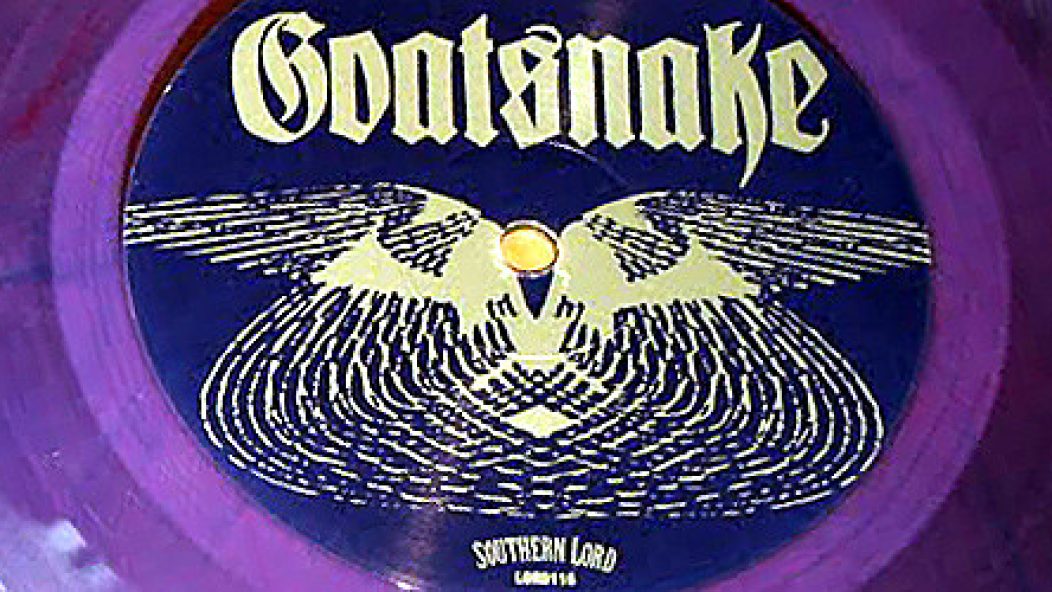
Group text: Goatsnake - "Flower of Disease"
. . .
Descriptions of heavy metal shows are often amusingly breathless. Words like “loud”, “fast”, and “wild” come into play. Those are all good things, and to the casual observer, they stand out. But, really, they’re just baselines. 99% of metal shows are loud, 90% are fast, and, OK, maybe 10% are wild. The point is that those traits grow less important as one grows more discerning. What matters more is what’s “good”.
What’s good is often not fast or wild at all. Take Goatsnake, for example. I had the good fortune to see them play last year. The experience was extraordinarily subtle. It was crushingly loud, of course, but good earplugs made that moot. What stood out were the incredibly nuanced performances.
Heavy metal is technological. By definition, it uses amplification, which is technically of a guitar signal but is really of human capability. Through a powerful enough amp/cabinet setup, one human can have the volume of hundreds.
Let’s analogize amplification to another enhancement of human capability: the baseball bat. We’re talking about heavy metal, so the bat is a mile long. (It has quite a wallop.) Let’s say that a human holding the bat at its end swings the bat 10 degrees. Dusting off the formula for a circle’s circumference, C = 2 x pi x r, we find that this 10 degree swing causes the bat’s end to travel approximately 921 feet. POW! In heavy metal, a little effort goes a long way.
This was true for Goatsnake. Two things stood out about them. The first was the fact that singer Pete Stahl sounded even better than on record, with a big, warm expressiveness probably built from stacks of ’60s R&B singles. The second was the band’s monstrously large pocket. Drummer Greg Rogers lay waaay back behind the beat, and guitarist Greg Anderson didn’t play notes so much as push them out. His touch was so soft, he could have been kneading dough. No clenched posing, no air guitar-worthy heroics – he was massaging notes into being. If he had pushed any harder, you would not be reading this.
. . .
“Flower of Disease”
http://www.youtube.com/watch?v=UqOoGBvJBK4
. . .
Thus we arrive at “Flower of Disease”. What a wonderful phrase! It starts out soft and ends up sick. Goatsnake do exactly that. First, like any good Sabbath acolyte, they deliver bodacious, big-bottomed blues. But tritones infect the choruses, as do startlingly angelic vocal harmonies. We’re getting sicker and seeing delusions of heaven. We’ll get there yet – but first, a detour through purgatory.
The song leaves its key of B and wanders up to D. Why? Because it can, and, more likely, because it’s easier for the harmonica to play along. So we’re now in harmonica-friendly D – but Anderson keeps jabbing in a Bb, which is like giving bunny ears to a priest during Mass. It’s naughty. Right, then. We wipe our hands of that, and wend our way back to B. Lubed up on communion juice, we are considerably looser now. We break into a boogie. The nuns are looking good. We recite three hail marys and two hell yeahs. Anderson fingers one last devil-may-care bend, and we collapse into a sweaty heap.
Loud? If you choose. Fast? At times. Wild? Well, OK, a little. I’ll call you tomorrow, you’ll pretend not to know me, and we’ll do it all over again. My stamen is steamin’, you’re a pistil packin’ mama, and Ima eachur flower of disease.
. . .
GROUP TEXT
This post is part of a blog ménage à trois.
Covering this topic from the plants and beer angle is Phyte Club.
Covering this topic from the cupcakes angle is Metalcakes.
Collect the complete set and read all three.
. . .











